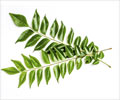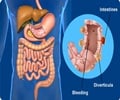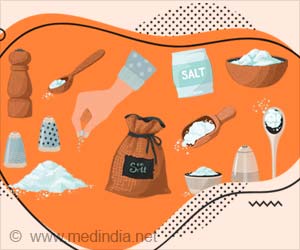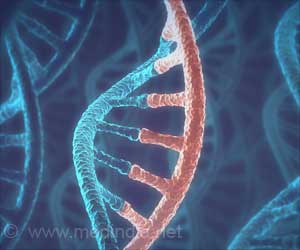Curry leaves aren’t just for flavor- they fight disease, boost brain health, and regulate sugar. Here’s why this humble herb deserves a spot in your meals!
- Curry leaves are packed with antioxidants and plant compounds that help fight diseases and reduce inflammation
- They may support heart health, regulate blood sugar, and even offer neuroprotective and anticancer benefits
- Easily added to dishes, curry leaves enhance both flavor and nutrition, making them a must-have in your kitchen
Curry leaves are rich in girinimbine, a compound that may help fight cancer and boost brain function! #curryleaves #superfood #healthyeating #medindia’
Health Benefits of Curry Leaves
Here are nine amazing benefits of curry leaves.Rich in Plant Compounds:
Curry leaves are high in antioxidants (1✔ ✔Trusted Source
Chemical composition, antibacterial and antioxidant profile of essential oil from Murraya koenigii (L.) leaves
Go to source), which may help protect your health by lowering oxidative stress and scavenging free radicals.Reduces the Risk of Heart Disease:
Curry leaves may improve heart health by lowering heart disease risk factors like high cholesterol and triglyceride levels (2✔ ✔Trusted Source
Effect of mahanimbine, an alkaloid from curry leaves, on high-fat diet-induced adiposity, insulin resistance, and inflammatory alterations
Go to source). However, further research is required.Exhibits Neuroprotective Properties:
Animal studies suggest that curry leaf extract may protect against neurodegenerative disorders like dementia and Alzheimer's disease (3✔ ✔Trusted Source
Protective effects of total alkaloidal extract from Murraya koenigii leaves on experimentally induced dementia
Go to source), (4✔ ✔Trusted Source
Effects of the total alkaloidal extract of Murraya koenigii leaf on oxidative stress and cholinergic transmission in aged mice
Go to source).Anticancer Effects:
Test-tube and animal research suggest that curry leaves may have powerful anticancer properties (5✔ ✔Trusted Source
Murraya koenigii leaf extract inhibits proteasome activity and induces cell death in breast cancer cells
Go to source). Researchers attribute these potent anticancer effects to the antioxidants found in curry leaves, which include girinimbine, quercetin, catechin, rutin, and gallic acid (6✔ ✔Trusted Source
Evaluation of Bioactive Compounds, Pharmaceutical Quality, and Anticancer Activity of Curry Leaf (Murraya koenigii L.)
Go to source) .Regulates Blood Sugar:
Animal studies have shown that curry leaf extract can help reduce high blood sugar levels and protect against diabetic symptoms such as nerve discomfort and kidney damage (7✔ ✔Trusted Source
Influence of Murraya koenigii on experimental model of diabetes and progression of neuropathic pain
Go to source) .Pain-Relieving:
In mouse studies, oral administration of curry extract considerably lowers generated discomfort (8✔ ✔Trusted Source
The Methanolic Extract from Murraya koenigii L. Inhibits Glutamate-Induced Pain and Involves ATP-Sensitive K+ Channel as Antinociceptive Mechanism
Go to source).Anti-inflammatory:
Curry leaves include a variety of anti-inflammatory chemicals, and animal studies have demonstrated that curry leaf extract can help lower inflammation-related genes and proteins (1✔ ✔Trusted Source
Chemical composition, antibacterial and antioxidant profile of essential oil from Murraya koenigii (L.) leaves
Go to source).Antimicrobial:
A test-tube study discovered that curry leaf extract reduced the growth of potentially hazardous bacteria, such as Corynebacterium TB and Streptococcus pyogenes (5✔ ✔Trusted Source
Murraya koenigii leaf extract inhibits proteasome activity and induces cell death in breast cancer cells
Go to source).

Adding Curry Leaves to Your Diet
Curry leaves have been a staple of traditional Indian food since ancient times. Their distinct flavor is generally described as including mild citrus notes with a hint of nuttiness. The leaves are frequently used in meat dishes, curries, and other traditional Indian recipes to impart a powerful, rich flavor. They are available fresh in some specialized stores, but are most usually found dried in supermarket stores' spice sections. Curry leaves soften when cooked, and they are frequently sautéed in oil or butter before being used in dishes.- Sauté curry leaves in ghee over high heat until softened, then add to any recipe you choose.
- For a refreshing flavor, infuse broths with curry leaves.
- To create a tasty seasoning blend, combine fresh or dried curry leaves with additional spices like red chile, turmeric, and cumin seeds.
- To add flavor to any savory food, sprinkle diced or crushed dried curry leaves on top.
- Cook the curry leaves in hot oil, then serve the infused oil as a dip or topping for crusty toast.
- Add curry leaves to chutneys and sauces.
- Toss chopped curry leaves into savory baked goods, such as breads and crackers.
References:
- Chemical composition, antibacterial and antioxidant profile of essential oil from Murraya koenigii (L.) leaves - (https://pmc.ncbi.nlm.nih.gov/articles/PMC4104627/)
- Effect of mahanimbine, an alkaloid from curry leaves, on high-fat diet-induced adiposity, insulin resistance, and inflammatory alterations - (https://pubmed.ncbi.nlm.nih.gov/27663177/)
- Protective effects of total alkaloidal extract from Murraya koenigii leaves on experimentally induced dementia - (https://pubmed.ncbi.nlm.nih.gov/22142688/)
- Effects of the total alkaloidal extract of Murraya koenigii leaf on oxidative stress and cholinergic transmission in aged mice - (https://pubmed.ncbi.nlm.nih.gov/22447662/)
- Murraya koenigii leaf extract inhibits proteasome activity and induces cell death in breast cancer cells - (https://pubmed.ncbi.nlm.nih.gov/23302496/)
- Evaluation of Bioactive Compounds, Pharmaceutical Quality, and Anticancer Activity of Curry Leaf (Murraya koenigii L.) - (https://pubmed.ncbi.nlm.nih.gov/24693327/)
- Influence of Murraya koenigii on experimental model of diabetes and progression of neuropathic pain - (https://pmc.ncbi.nlm.nih.gov/articles/PMC3093092/)
- The Methanolic Extract from Murraya koenigii L. Inhibits Glutamate-Induced Pain and Involves ATP-Sensitive K+ Channel as Antinociceptive Mechanism - (https://pmc.ncbi.nlm.nih.gov/articles/PMC5080466/)
Source-Medindia
















